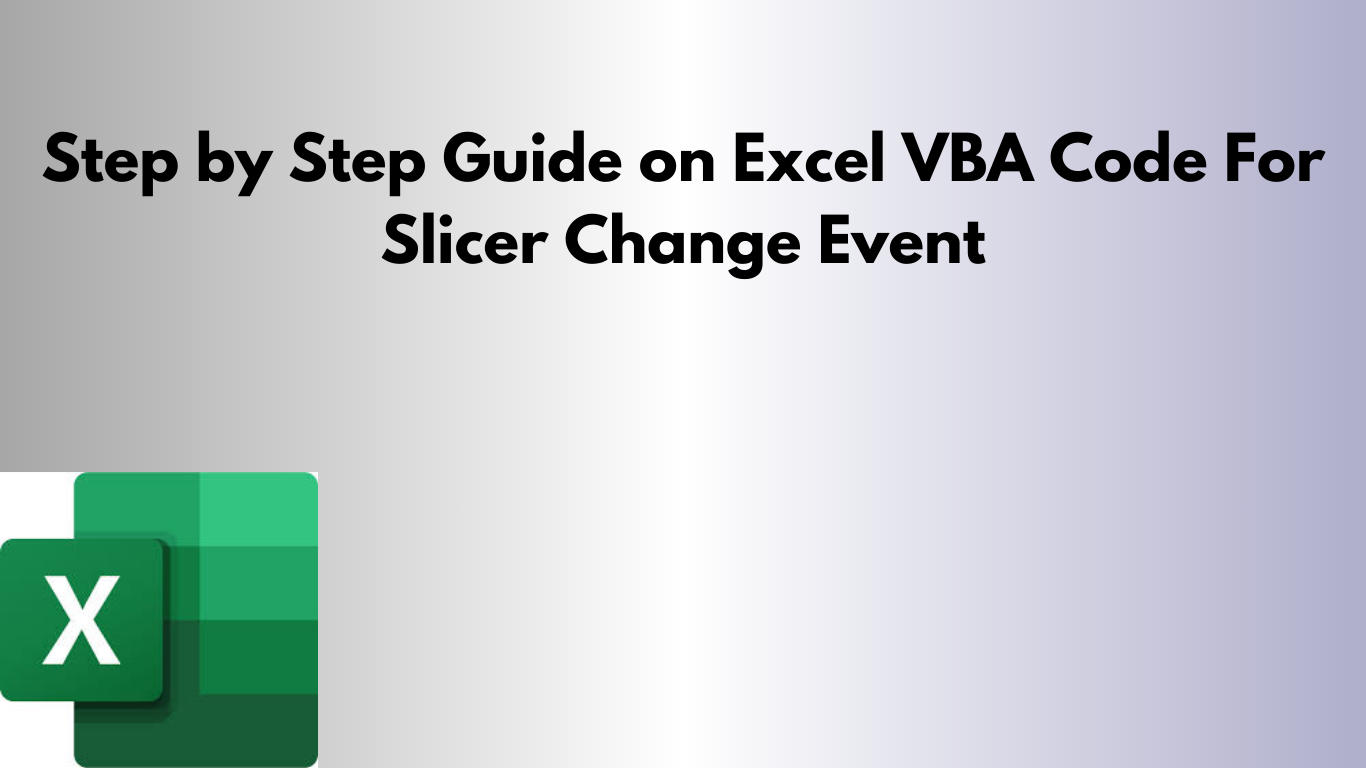Step by Step Guide on Excel VBA Code For Slicer Change Event
September 5, 2025 | by Admin
📥 Quick Start: You can download a ready-to-use Excel template with sample data, a PivotTable, and VBA macros for slicer change events.
Key Takeaways
- Excel VBA code can help trigger actions when slicer selections change.
- Activating the Developer tab and identifying slicers are essential steps.
- Retrieving selected slicer values and driving actions based on them enables dynamic automation.
- Updating PivotTables and charts with slicer changes improves dashboard interactivity.
- Debugging tips and template support help smooth implementation.
Understanding Slicer Change Events
Excel slicers provide intuitive filtering, but they lack a native event for change detection. With VBA, you can capture slicer selections—allowing automated responses like refreshing charts, filtering tables, and more.
Activating the Developer Tab in Excel
- Go to File → Options → Customize Ribbon.
- Check the Developer box.
- Click OK to apply changes.
Identifying and Adding Slicers
Select your PivotTable, click Insert → Slicer, choose desired fields (e.g. Brand, Model), and place slicers on the sheet.
Accessing the VBA Editor
Press Alt + F11 to open the Visual Basic Editor and start writing VBA code.
Initializing the Slicer Change Event
Instead of a dedicated slicer event, use PivotTable-based triggers:
Private Sub Worksheet_PivotTableUpdate(ByVal Target As PivotTable)
If Target.Name = "SalesPivot" Then
Call OnSlicerChanged
End If
End Sub
Sub OnSlicerChanged()
MsgBox "Slicer changed — dashboard updated!"
End Sub
This macro fires when the PivotTable "SalesPivot" updates—typically via slicer use. You can change the action inside OnSlicerChanged to suit your needs (e.g. refresh charts).
Another option is using the Worksheet_PivotTableChangeSync event for better timing, or a hidden dummy formula with Worksheet_Calculate as a fallback. Both workarounds are well-documented and effective.
Retrieving Selected Slicer Values
Access the currently selected slicer item via the VBA object model—for example:
Dim sc As SlicerCache
Set sc = ActiveWorkbook.SlicerCaches("Slicer_Brand")
Debug.Print sc.SlicerItems(sc.SlicerItems.Count).Name
Performing Actions Based on Slicer Change
Go beyond message pop-ups—automate chart refreshes, highlight key data, filter other PivotTables, or even conditionally format cells.
Updating PivotTables or Charts with Slicer Changes
To ensure your chart always syncs with filtered data, include updates like:
ActiveSheet.ChartObjects("Chart1").Chart.Refresh
Debugging and Troubleshooting
- Ensure slicer and PivotTable names are accurate.
- Use VBA comments and
MsgBoxto trace execution. - Check that macros are enabled and events are not disabled (
Application.EnableEvents = True). - Use a dummy formula in a hidden sheet to trigger
SheetCalculateif needed.
Template Demonstration: Get Started Quickly
Want a hands-on example? Download the free template below with live sample data and instructions:
- Pre-loaded SalesData sheet with sample data.
- Dashboard sheet with step-by-step instructions.
- Guidance for creating a PivotTable named SalesPivot and inserting slicers.
- Built-in VBA modules to capture slicer change events.
📥 Download the Excel Slicer Change Event Template
How to Use the Template
- Open the template in Excel and enable macros.
- Insert slicers for Brand and Model as instructed in the Dashboard sheet.
- Test slicer selections—message boxes and other behavior should trigger immediately.
Conclusion
With these techniques and your new template, you can confidently detect and respond to slicer events—supercharging your Excel dashboards with automation and interactivity.
